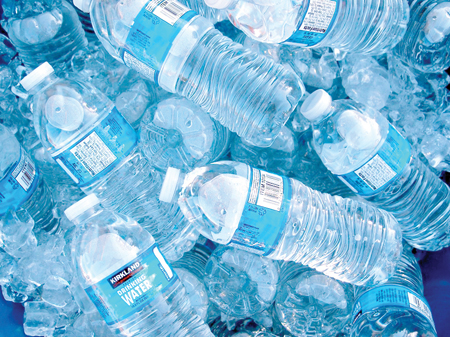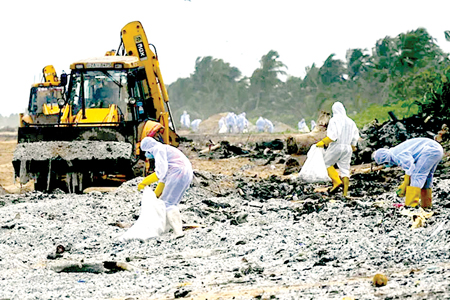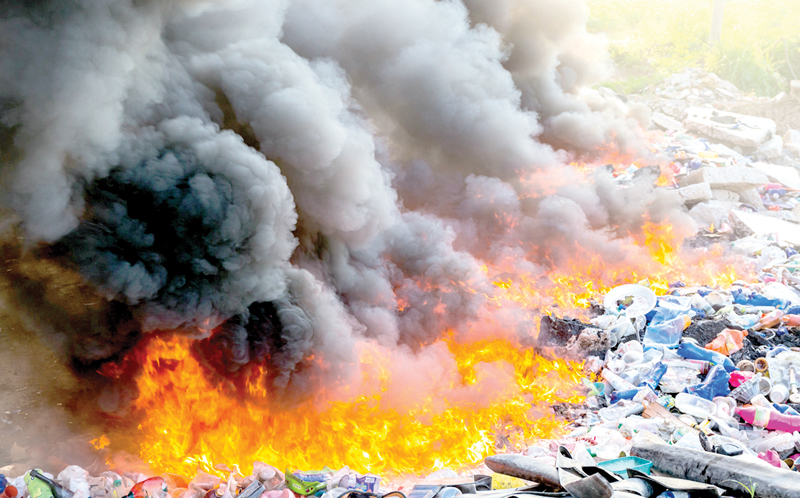 They are too small to see, too common to avoid, and too dangerous to ignore. Microplastics, the invisible fragments of our throwaway culture, have slipped into every corner of our lives, quietly rewriting our biology. From the food we eat, the water we drink, the salt we sprinkle, the make-up we apply, to the clothes we wear and even the air we breathe, we are consuming an average of 5 grams of microplastics every week, the equivalent of a credit card.
They are too small to see, too common to avoid, and too dangerous to ignore. Microplastics, the invisible fragments of our throwaway culture, have slipped into every corner of our lives, quietly rewriting our biology. From the food we eat, the water we drink, the salt we sprinkle, the make-up we apply, to the clothes we wear and even the air we breathe, we are consuming an average of 5 grams of microplastics every week, the equivalent of a credit card.
Microplastics are now in our blood. Yet here we are in 2025, two decades after scientists first raised the alarm, still sipping water from soft plastic bottles left in hot cars, still wrapping hot food in polythene, still burning waste plastic in backyards. It is time we stopped treating plastic as someone else’s problem, because the threat to our own health is real. These insidious microscopic particles now reside in our organs and our unborn children, even before they see the light of day.
Tiny plastic particles
Microplastics are small plastic pieces less than five millimetres in length. They are classified into two types as primary and secondary. Primary microplastics are factory-produced. Examples include micro-beads found in personal care products such as toothpastes and face scrubs, plastic pellets (or nurdles) used in industrial manufacturing, and plastic fibres used in synthetic textiles such as nylon. These are available in the Sri Lankan market as well.

Sri Jayewardenepura University Medical Sciences Faculty Senior Lecturer Dr. Sajith Edirisinghe
The moment we hear the word “nurdles”, the next thing that comes to our mind is the X-Press Pearl disaster in 2021. Of the 1,486 containers aboard the ill-fated vessel, 87 containers were reportedly full of plastic pellets, all of which spilled into the sea, washing ashore day after day, polluting our marine environment like never before.
Secondary microplastics are formed from the breakdown of larger plastic items, typically as a result of weathering. The PET bottle, toffee wrapper and the milk packet that we throw away eventually fall into this category.
Going back to where it all began, the 1960s marked a period of significant growth and innovation in the use of plastics, making them an essential part of everyday products and applications. However, the concept of microplastics and their potential harm to human health was not widely recognised until 2004. That is when marine biologist Richard Thompson and his team published a paper in the journal ‘Science’, reporting the discovery of microscopic plastic fragments in the ocean, which they termed “microplastics”. Smaller versions of microplastics, typically less than 1 micrometre (1000 nanometres) in size, are now referred to as “nanoplastics”.
“Now it is 2025, have we done enough to address the issue?” asked Sri Jayewardenepura University Medical Sciences Faculty Senior Lecturer Dr. Sajith Edirisinghe. He said that the global recycling rate of plastic waste remains below 10 percent, with the majority ending up in landfills or the ocean. “For every three metric tons of fish there is one metric ton of microplastics, according to the latest estimates. Gradually, there will be more plastic than fish in the ocean,” he added. He underlined that Sri Lanka ranks fifth in the world for plastic mismanagement.
He was speaking at an awareness raising program for stakeholders and partners on prevetion of plastic pollution at the Environment Ministry auditorium recently. The workshop was organised parallel to the ‘World Environment Day 2025’.

Avoid bottled water
Dr. Edirisinghe, citing a study conducted in 2022 by a team of Peradeniya University researchers, said that microplastics can be found in the salt we buy, irrespective of the brand. According to the study, microplastics are present in commercial table salt, with levels varying between brands and influenced by the salt-making process. The highest levels of microplastics were found in salt from industrial salterns like Hambantota, with some samples containing over 3300 microplastics per kilogram. The most common types of microplastics identified were fragments and fibres.
Scientifically proven
The doctor advised against drinking water from plastic bottles, adding that it has been scientifically proven that the inner layer of these bottles gradually breaks down. “We do not drink the water on the same day it is manufactured. The bottles are transported long distances in lorries, often under the hot sun. Even if we the water is 100 percent purified before bottling, it becomes contaminated by the time we drink it. For the same reason, we strongly advise against keeping plastic water bottles in vehicles for drinking purposes. You can use that water for the radiator, but do not drink it,” he added.
He cautioned that research has found Bisphenol-A (BPA), an industrial chemical used in many commercial products, including food containers and plastic water bottles, may contribute to the development and progression of breast cancer.
The senior lecturer said that the highest intake of microplastics into our bodies is through the air we breathe. “They eventually enter the bloodstream, leading to cancer and many other illnesses. We know that betel quid (bulath wita) increases the risk of oral cancer and smoking increases the risk of lung cancer, but with microplastics, we do not know where they might end up in the body. While one person may develop brain cancer, another might develop lung, liver or kidney cancer.
“Worse still, microplastics can enter the body of an unborn child through the air inhaled by the pregnant mother. In other words, babies are now being born with microplastics already in their bodies. It is no wonder that paediatric cancer rates are on the rise. The plastics we carelessly throw away can affect generations to come,” he added.
The academic said that plastic fibres used in synthetic textiles such as nylon are the type of microplastic we most commonly absorb.
He advocated for gradually reducing the use of nylon clothing and nylon fishing nets.
“Cosmetics such as foundation, make-up and lipstick contain microplastics. They can enter the body through damaged skin. The smaller they are, the easier it is for them to penetrate,” Dr. Edirisinghe said.
“We often discard items like pen torch batteries and CFL bulbs carelessly, but they contain heavy metals such as cadmium, mercury, and arsenic. Microplastics have the ability to firmly bind these toxic substances on their surfaces. Moreover, during plastic production, chemicals like mercury, arsenic, and lead are commonly used, to make bottles transparent or to enhance the strength of plastic materials. These heavy metals, concentrated on microplastics in such ways, eventually make their way into our bodies,” he said.
Rewriting our biology
He also highlighted that research has shown higher levels of microplastics in the brains of individuals with dementia compared to those without the condition. He added that gene disruption can also happen due to microplastics.

Beach clean-up in the immediate aftermath of the X-Press Pearl disaster
“As the concentration of plastics in our bodies increases, some active genes may become mutated, while others may become abnormally activated,” the doctor explained. Our bodies contain three main types of genes related to cancer: DNA repair genes, oncogenes, and tumor suppressor genes. DNA repair genes correct errors in DNA, oncogenes regulate normal cell growth but can trigger cancer if mutated, and tumor suppressor genes help prevent cancer by limiting cell growth. “What happens if tumor suppressor genes, which are supposed to protect us, get mutated due to microplastics?” he asked.
He said that microplastics can act as hormones in body and lead to infertility and cancers associated with reproductive system.
“A thin layer of microorganisms develop on the lunch sheets and food wrapping we throw away. It is called a biofilm. That is why we repeatedly urge people to collect lunch sheets and leftover food separately,” he said.
Moreover, the biofilm that forms on the surface of microplastics in aquatic environments is known as the “plastisphere”, a term added to the Oxford dictionary in 2013. “These floating particles, often transported across oceans, can carry microbes over great distances, playing a troubling role in the much-discussed issue of antimicrobial resistance (AMR),” he added.
“They provide a stable habitat for bacteria, including antibiotic-resistant strains, increasing the risk of infections that no longer respond to treatment. Studies suggest that smaller microplastics may even prolong the survival of viruses on their surfaces, contributing to the rapid spread of diseases like Covid-19,” he said.
With commonly used antibiotics like amoxicillin now ineffective in nearly 90 percent of cases, he warned that microplastics could be accelerating us towards a future where antibiotics may no longer work.









